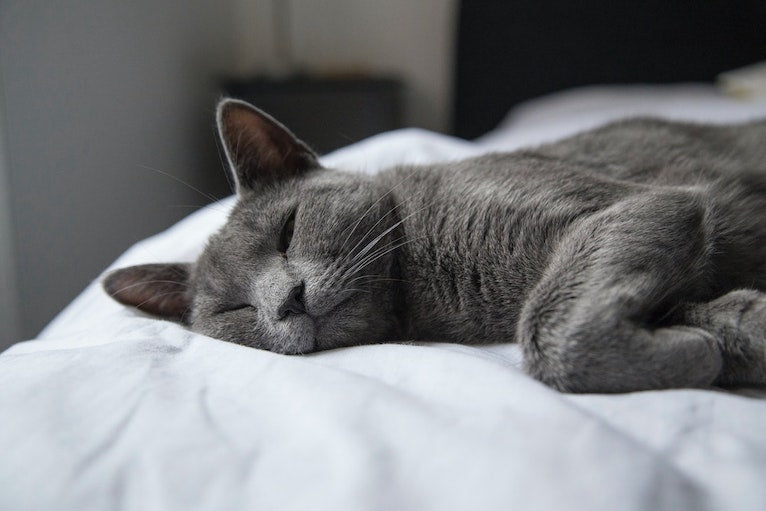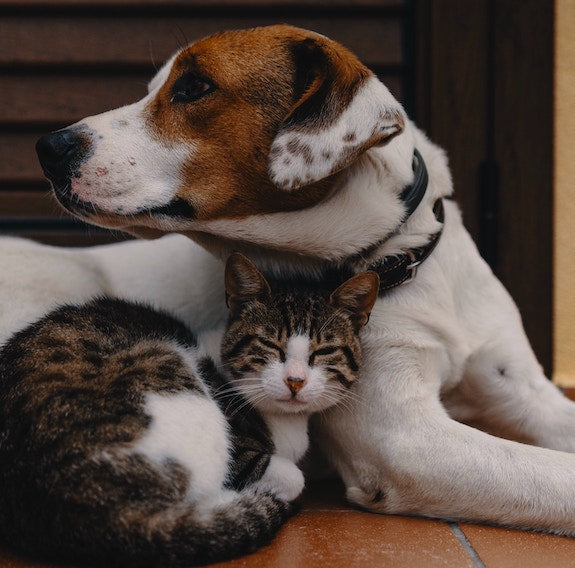Introduction
FLUTD (Feline Lower Urinary Tract Disease) is a disease of the lower urinary tract that can affect many cats at some point in their lives. It is therefore important for us cat parents to educate ourselves about FLUTD so that we can understand the symptoms, causes and treatment options for the disease. In this blog, you'll learn everything you need to know about FLUTD - from causes and risks to diagnosis and treatment.
What is FLUTD?
Definition
Feline Lower Urinary Tract Disease (FLUTD) is an umbrella term for various diseases of the lower urinary tract in cats. FLUTD primarily affects the cat's bladder and urethra and presents with a wide range of symptoms such as difficulty urinating or blood in the urine. Cats of all ages and breeds are affected by the condition, but over time a number of common features have emerged that may contribute to FLUTD. It's important to know that, as mentioned earlier, FLUTD is not a specific condition but rather a group of symptoms that can indicate a variety of underlying conditions in your cat's urinary system. Proper diagnosis is critical to treating FLUTD to prevent more serious complications.
Symptoms
As mentioned above, symptoms of FLUTD include a wide range of symptoms:
- Frequent urination: Your cat has to run to the litter box more often and spends more time in it
- Urine is only released drop by drop: Your cat only urinates in very small amounts
- Severe pain when urinating: Your cat meows or screams while urinating
- Behavior Change: With the stress and pain of FLUTD, your cat is irritable, aggressive, and has other symptoms such as lethargy and loss of appetite
- Frequent licking of the genitals: Your cat knows that she is sick and grooms herself more and more
- Urinating outside the litter box: Your cat is no longer making it to the litter box in time
Causes of FLUTD in cats
FLUTD encompasses a wide range of symptoms and therefore also has various factors that can contribute to the development of the disease. The two most common causes of FLUTD include bladder infections and bladder stones or crystals. A diagnosis of cystitis or idiopathic cystitis (cystitis with no apparent cause) is made when the veterinarian cannot pinpoint a specific cause of the cat's FLUTD. Bladder stones or crystals, on the other hand, are an actual identified cause. They irritate the bladder wall to the point of bacterial cystitis and in some cases can also lead to blockage of the urethra. Other causes of FLUTD include urinary tract infections and narrowing of the urinary tract from malformations, scar tissue, or tumors.
As we discussed earlier, there are a number of factors that increase the risk of FLUTD in cats:
- Male hangovers: male hangovers have a narrower urethra, which can lead to blockages and inflammation.
- Neutered tomcats: Neutered tomcats are more likely to be overweight.
- Obesity: Overweight cats tend to go to the bathroom less often. Holding urine in the bladder for a long time increases the risk of cystitis and FLUTD.
- House cats: House cats are less active and can be more prone to stress and obesity.
- Diet: Poor diet promotes obesity and the formation of bladder stones and crystals.
Risks
FLUTD is best diagnosed early and treated properly, as the condition can have serious consequences. A dangerous consequence of FLUTS is obstruction of the urinary tract (urethral obstruction) and occurs when bladder stones or crystals block the urethra, also preventing urine from flowing out. If your cat is unable to urinate, it will back up in her bladder and can back up to her kidneys. In the case of a urethral blockage, you should act quickly, because the accumulation of urine can lead to urine poisoning or kidney failure, among other things. Further consequences of untreated FLUTD are chronic inflammation and scarring of the urinary tract.
Therapy and prevention
Diagnosis
In order to diagnose and treat FLUTD, the first step is to determine the cause. In addition to a thorough review of the medical history, a number of tests play an important role in developing an effective treatment plan.
- Urinalysis: The cat's urine will also be examined for signs of infection, crystals, or even bacteria.
- X-rays and Ultrasound: These imaging tests can be used to visualize the bladder and urinary tract, identify blockages and abnormalities, and provide more accurate treatment procedures.
- Blood test: For more detailed tests, the ratio of urine protein to creatinine can be determined.
- Cystoscopy: Similar to a gastroscopy, a small camera is inserted into the bladder.
Therapy
The treatment plan for FLUTD depends on the cause of the condition. Dietary changes and/or medication may be prescribed for bladder stones or crystals to dissolve them or prevent them from forming. Antibiotics may be prescribed for bacterial infections. A urinary tract obstruction usually requires a stay in a veterinary clinic to reduce the pressure on the bladder with a catheter. In some cases, such as tumors or anomalies, your four-legged friend's urinary tract can also be treated by surgery.
In addition to treating the root cause directly, there are other things you can do to improve your cat's quality of life. Reducing stress is one of the best ways to help your four-legged friend. Give your cat a quiet environment and lots of love so it can rest in peace. It's best to work closely with your veterinarian to develop a customized treatment plan for your four-legged friend and closely monitor how your cat responds to their therapy. This way you can achieve the best possible result for your cat.
Use of toilet trackers for the cat litter box
With the help of a toilet tracker like the Feniska Base for cats , you can identify the onset of FLUTD early by monitoring the cat's toilet behavior and weight on a daily basis.
The Feniska Base is also good for identifying whether a therapy is working by monitoring the progress of recovery.
Prevention
If you want to prevent the risk of FLUTD, there are several measures you can take. Make sure your cat has enough fresh water. In addition, a high-quality and balanced diet can help prevent obesity and reduce the risk of bladder stones. As we've already discussed, a stress-free environment can also have a positive impact on your cat's health. You can successfully reduce your cat's stress levels with a quieter place to sleep or more exercise and play. To ensure your cat develops regular toileting habits, make sure her litter box is clean and easily accessible.
We hope that our blog gave you a better light on FLUTD and how to treat it. FLUTD can be an intimidating topic for many cat parents, but as with any condition, the earlier the diagnosis is made, the better the condition can be managed. If you want to catch FLUTD early, you should closely monitor their toilet behavior and notify your veterinarian as soon as any significant changes occur.
FENISKA Base for early detection of symptoms of FLUTD, cystitis and bladder stones and crystals in cats

The above symptoms, such as frequent urination, frequent urination, or prolonged visits to the toilet are indicators of cystitis, bladder stones, bladder crystals, or FLUTD. These symptoms can be recognized early with the help of the Feniska Base. The Feniska Base is a smart pet scale that can be placed under the litter box. The Feniska Base automatically tracks the cat's toilet habits and weight 24/7. The cat's toilet data is provided in the Feniska app. If, for example, more frequent visits to the toilet, longer visits to the litter box or other changes in the cat's behavior are detected on the toilet, the Feniska app alerts the owner. As a result, the symptoms of FLUTD do not go unnoticed for long and the cat can be spared pain.



